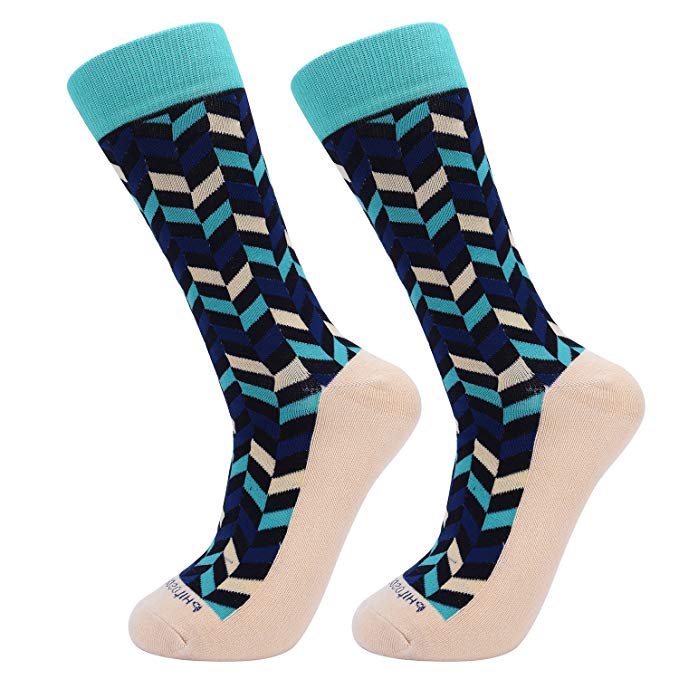Philosockphy's Sock of the Month - Which Material is Best for Socks? Cotton, New Wool or Cashmere?
Attention all sock aficionados and fashionistas! It's time to put your best foot forward and tackle one of life's most pressing questions: Philosockphy's Sock of the Month - Which Material is Best for Socks? Cotton, New Wool, or Cashmere? We've all been there, standing in front of our sock drawer, pondering the eternal conundrum of comfort versus style. But fear not, because we're about to unravel the mysteries of sockology and provide you with the short answer right away: there's no one-size-fits-all when it comes to sock materials. Intrigued? Well, hold onto your sock garters because we're diving deep into the fabric of sock philosophy to find out which material reigns supreme, and why you should care.
Philosockphy's Sock of the Month - Which Material is Best for Socks? Cotton, New Wool or Cashmere?
1. Exploring the Philosophy Behind Sock Material Choices
Socks, often considered a minor detail in our daily attire, can have a significant impact on our overall comfort and well-being. The choice of sock material is not merely a matter of fashion but a profound reflection of our personal philosophy when it comes to clothing.
2. Cotton vs. New Wool vs. Cashmere: A Sock Material Showdown
Let's dive into the ring and witness a sock material showdown between cotton, new wool, and cashmere. Each material brings its unique set of characteristics to the table.
Cotton Socks: The Classic Contender
Cotton socks are the workhorses of our sock drawers. Breathable, lightweight, and affordable, they are the go-to choice for many. Cotton socks excel in daily wear, providing comfort and moisture-wicking properties that keep our feet dry.
New Wool Socks: The Warm Embrace
New wool socks, derived from the fleece of sheep, are celebrated for their warmth. Unlike traditional wool, new wool is softer and less itchy, making it an excellent choice for colder seasons. The insulation they offer can be a game-changer during chilly winters.
Cashmere Socks: The Luxury Touch
Cashmere socks, the epitome of luxury, are crafted from the soft undercoat of cashmere goats. Renowned for their unmatched softness and warmth, cashmere socks are a treat for the feet. But with great comfort comes greater expense.
3. The Comfort Factor: Which Material Offers the Best Sock Experience?
Comfort is king when it comes to socks. It's not just about feeling good; it's also about how well your socks perform throughout the day.
Cotton Socks: A Breath of Fresh Air
Cotton socks are like a breath of fresh air for your feet. Their natural breathability ensures that your feet stay cool and dry, reducing the chances of odor and discomfort. Whether you're running errands or attending a casual gathering, cotton socks keep you comfortable.
New Wool Socks: Toasty Toes in Winter
When winter's chill sets in, new wool socks are your best companions. Their insulating properties trap heat close to your skin, keeping your feet snug and warm. Whether you're hitting the slopes or enjoying a snowy walk, these socks have got your back, or rather, your feet.
Cashmere Socks: The Lap of Luxury
If you're seeking the ultimate sock indulgence, cashmere socks provide a luxurious experience. The unmatched softness and warmth cocoon your feet in pure comfort. Perfect for a cozy evening by the fireplace or a special occasion that demands the finest.
4. Sustainability and Socks: Assessing the Environmental Impact
In an era where sustainability is a growing concern, it's essential to consider the environmental impact of our clothing choices, including socks.
The Eco-Friendliness of Cotton
Cotton, being a natural fiber, is biodegradable and renewable. However, conventional cotton farming often involves the use of pesticides and excessive water. Opting for organic cotton socks can mitigate some of these environmental concerns.
New Wool's Sustainable Side
New wool, sourced from sheep, is generally considered sustainable due to the animals' ability to regrow their fleece. It's essential to choose wool from responsibly managed farms to ensure ethical and eco-friendly practices.
Cashmere's Costly Carbon Footprint
Cashmere, while luxurious, has a significant environmental impact. The goats producing cashmere require vast grazing lands, which can lead to overgrazing and desertification. Moreover, the complex process of turning cashmere into yarn consumes energy and resources.
5. Finding the Perfect Pair: Sock Material Selection Tips
Now that we've delved into the world of sock materials, how can you make an informed choice when shopping for your next pair of socks?
Consider the Occasion
Think about where and when you plan to wear your socks. For everyday use, cotton socks are versatile and comfortable. If you're braving the cold, opt for new wool. Reserve cashmere for special occasions.
Check the Label
Always check the label for details on the sock's material composition. Look for organic cotton for eco-friendliness, and ensure that wool socks are responsibly sourced.
Rotate Your Socks
To extend the lifespan of your socks, it's a good practice to rotate them. This reduces wear and tear and ensures that your socks remain in good condition for longer.
In conclusion, the choice of sock material is not a trivial matter. It reflects our comfort, values, and awareness of environmental impact. Whether you prefer the breathable cotton, the cozy warmth of new wool, or the opulent luxury of cashmere, your socks are an essential part of your daily attire. Consider your needs and values when selecting your next pair, and you'll step into each day with the right foot forward.




